In the more-than sixty-year history of Disney Parks, the creative visionaries of Walt Disney Imagineering have developed an attraction catalogue filled with brilliant, masterpiece rides that showcase innovative technologies, stunning visuals, moving musical scores, and thoughtful narratives. Sometimes, even the most wondrous attractions are taken before their time.
And today’s entry into our Lost Legends series is all about one of Disney’s most spectacular modern feats of Imagineering – a staggering blend of innovative technologies, incredible sights, and an indescribable score.
When Disney’s California Adventure opened in 2001, it was an outright failure in the eyes of Disney’s management. The underfunded park tried to be “hip” and “edgy.” Say what you will about the original park; it had at least one thing going for it: a surprising headliner that made many reevaluate what an E-Ticket could look like. Gone but not forgotten, today we remember Soarin’ Over California. How was this soaring simulator developed? What was it like? Why is it gone? Today, we’ll explore it all in our in-depth look back.
And before we head off, remember that you can unlock rare concept art and audio streams in this story, access over 100 Extra Features, and recieve an annual Membership card and postcard art set in the mail by supporting this clickbait-free, in-depth, ad-free theme park storytelling site for as little as $2 / month! Become a Park Lore Member to join the story! Until then, let’s start at the beginning…
The world above
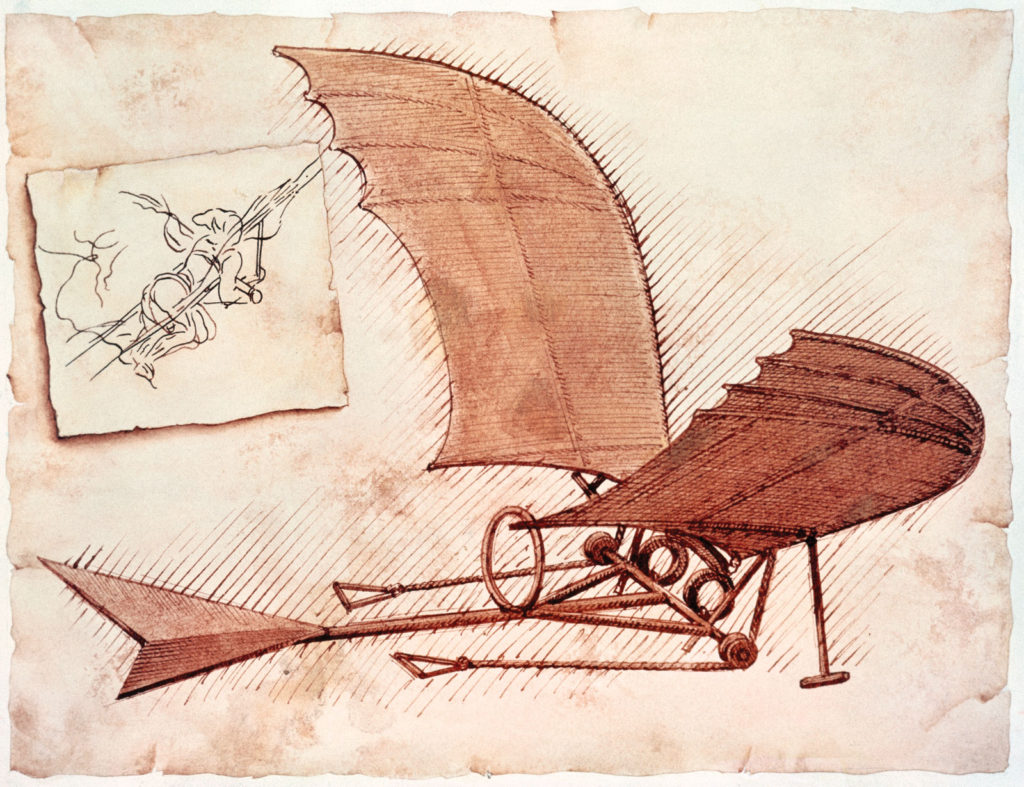
For most of the course of human history, people have looked to the skies in wonder and awe; dreamed of being weightless, soaring through the clouds and gazing down on the sights below. From Leonardo di Vinci’s winged conceptual ornithopter in the 1400s (above) to the invention of the hot air balloon three centuries later; the gliders and steam-engine powered aerodromes of the 1800s…
Those dreams finally took flight at 10:35 a.m., on December 17, 1903 in Kitty Hawk, North Carolina. While two year old Walt Disney was doubtlessly toddling around the family home in Chicago, Wilbur and Orville Wright piloted the world’s first successful airplane (“The Flyer”) in the first ever sustained, powered, controlled flight in a heavier-than-air vehicle (it weighed about six hundred pounds).
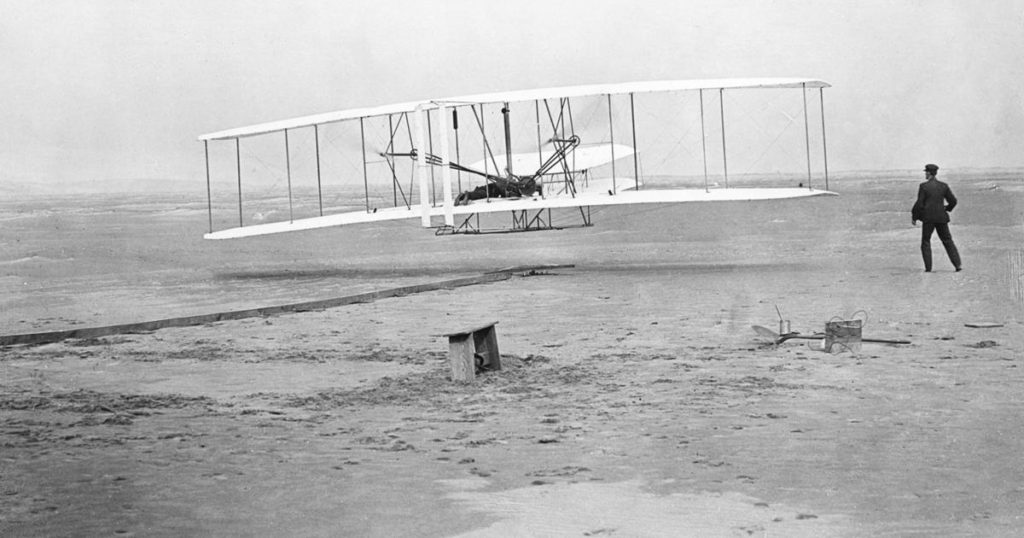
The brothers returned to Dayton, Ohio, where they worked for two more years perfecting their design. Finally, on October 5, 1905, Wilbur piloted the Flyer III for 39 minutes and about 24 miles of circles around Huffman Prairie, Ohio. He flew the first practical airplane until it ran out of gas. Consider for a moment that just over a hundred years ago (not that long ago, in the grand scheme of things), this was flight.
Humans had touched the skies, and they had no interest in staying grounded. As we know, flight took off (pun intended) in the 20th century, growing into a dominant means of transportation, connecting the world.
Flights of fancy
Flight has always been a shaper of Disney Parks, right back to the opening of Disneyland in 1955 when Peter Pan’s Flight, its weightless pirate galleons, and its trip over moonlit London was among the most magical experiences the park offered.
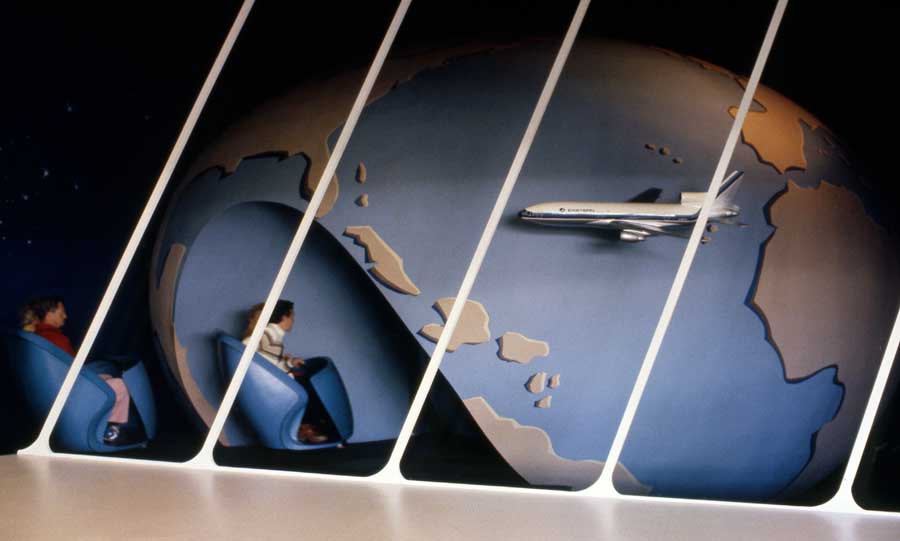
Maybe you could argue that the story of flight in Disney Parks really launches (that’s another pun) in Tomorrowland at the brand new Magic Kingdom in 1971. Just as the automobile and the new Interstate Highway system had “created” Disneyland in the 1950s, domestic air travel would be the lifeblood of Walt Disney World, creating an international – but accessible! – “Vacation Kingdom of the World.” And so, commercial flight was worthy of a whole Tomorrowland dark ride – the Lost Legend: If You Had Wings.
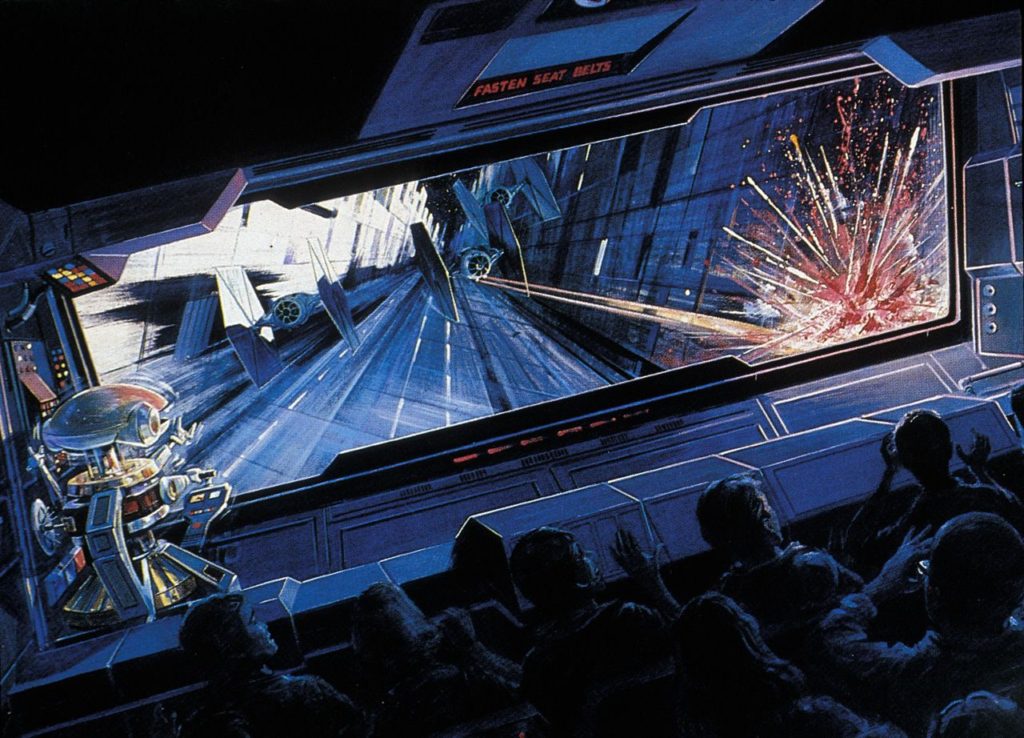
Nearly two decades later, in 1987, Disneyland debuted its most ambitious attraction in decades… Born of an unprecedented partnership with George Lucas, the Lost Legend: STAR TOURS was born. Cramming guests onto the Star Wars universe’s equivalent of a no-frills airline, Star Tours is remembered as the ride that changed Disney Parks forever, kicking off the Ride the Movies era.
But Star Tours also reinvented Disney Parks’ relationship with flight and – most importantly – the technology it used to make flight happen.

Its secret? A spectacular, cutting edge ride system we listed among the Seven Modern Wonders of the Theme Park World. The ATLAS – a military-training flight motion simulator repurposed for entertainment – was cutting edge in every way, and the fusion of screens and simulation created one of the world’s most sought-after ride experiences. It also put the power of the sensation of free flight right in Imagineers hands. The Age of the Simulator was upon us.
So while the ATLAS would become an industry-wide tool (powering the Lost Legend: Body Wars‘ flight through the blood stream, SeaWorld’s Mission: Bermuda Triangle and Wild Arctic, and Hong Kong Disneyland’s Iron Man Experience), its ability to send guests airborne spoke to the power of the simulator. And more than likely, it was meant to factor into Disney’s next theme park…
Disney’s America

In the 1990s, then-CEO Michael Eisner was at the helm of a company he’d help save from the brink. Eisner’s early career with Disney is often renowned for the epic and ambitious projects he greenlit for Disney Parks (including the one project that got a little too ambitious – his would-be-legacy-leaver, Disneyland Paris).
But Eisner wasn’t shy about the need and ability for Disney to grow and diversify, and he wasn’t against trying new things, either. That’s why – inspired by a trip to Colonial Williamsburg in eastern Virginia’s Historic Triangle – Eisner began envisioning a new project that would again change Disney’s business model. Eisner sought to purchase land for a new, regional, seasonal theme park that would capitalize on the region’s role in American history and its colonial attractions: Disney’s America.
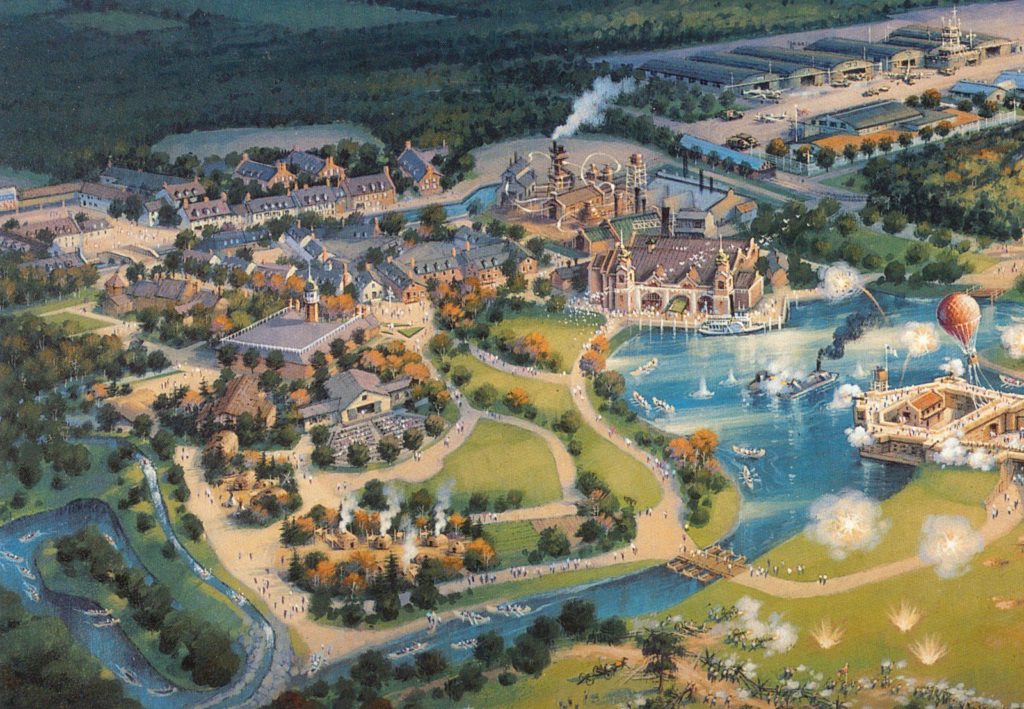
Disney’s America would have a tough job, carefully balancing historic reverence and fun; it would also face an uphill battle thanks to major pushback from locals, criticism of its subject matter, its proximity to real battlefields, and Disney’s apparently-adopted role as an arbitor of history and – according to the park’s name at least – claim on the country itself!
We dove deep into this unusual, exceptional, and (of course) never-built theme park in its own standalone feature – Possibilityland: Disney’s America – but aside from the park’s criticism and cancellation, there’s at least one ride important to the story of Soarin’. In the concept art above, look in the northeast corner. What may initially look like a backstage facility would actually be an entire land dedication to military aviation.
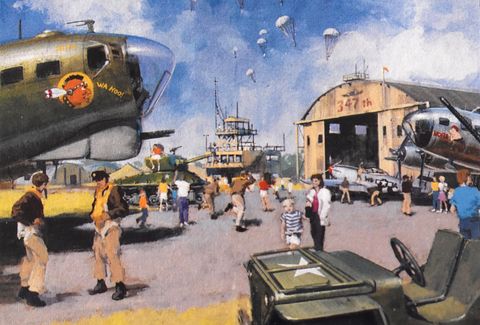
In Victory Field, guests would find themselves traveling down a wide, blacktop military airstrip of landed plans, hangar bays, troop transports, tanks, and more. You might not expect the Walt Disney Company to even want to take a stance on telling the story of military history (and indeed, there are at least a few elements in the above artwork alone that wouldn’t have aged welll…). Some say that early drafts of the land called for dueling steel roller coasters, dodging and weaving around each other like planes in a dogfight.
But looking carefully at the concept art, it’s almost certain that by time Disney’s America was ready to be announced, Disney Imagineers had decided to use the ATLAS ride system. Ironically turning the military flight simulator technology into – well – a military flight simulator, the hangars could inconspicuously house four ATLAS pods, sending guests on a aviation adventures. (It wouldn’t be so unheard of; SeaWorld Ohio had a small, two-ATLAS installation of Mission: Bermuda Triangle housed in a miltary quanset hut.)
You won’t be surprised to find that Disney’s America never made it off the drawing board… But in some ways, Victory Field did… Ready for takeoff?


